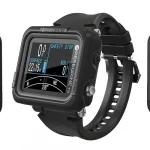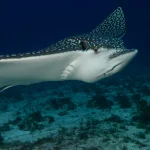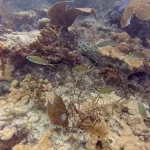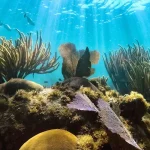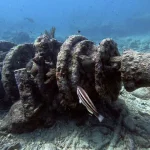Table of Contents
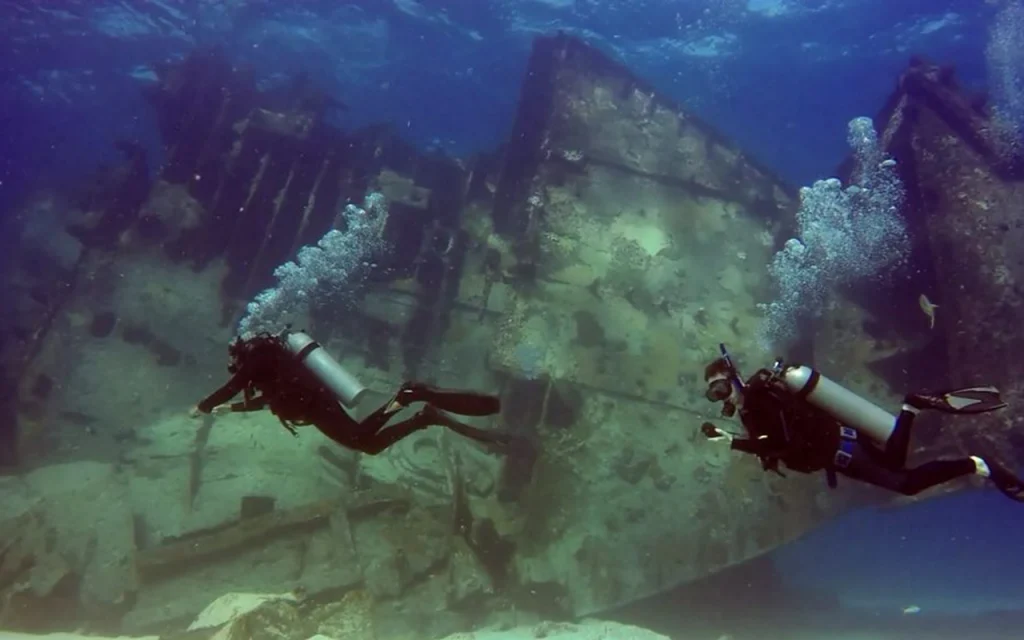
Scuba divers seem to really enjoy diving the accessible and historic Gulfamerica shipwreck off Jacksonville Beach. The relatively shallow depth, intact wreck structure, and ability to penetrate make it an appealing dive for everyone from novices to experienced wreck enthusiasts.
Article at a Glance
- The SS Gulfamerica was a newly built American tanker sunk on its maiden voyage in 1942 by a German U-boat just off the coast of Jacksonville Beach, Florida, resulting in 19 crew deaths.
- The wreck now rests on the seafloor at coordinates 30°16.670’N, 81°13.630’W at a depth of around 60 feet.
- Divers describe the Gulfamerica as an excellent shore diving wreck, with its relatively shallow 60ft depth making it appealing for recreational and new wreck divers.
- The wreck is mostly intact, allowing divers to penetrate and swim through different sections like the engine room and cargo holds.
- Marine life has taken over the wreck, attracting fish, lobsters, octopus, stingrays, sea turtles, and coral growth.
- Dive reviews praise the historical interest of the WWII shipwreck, good visibility, and abundant marine life.
- The wreck is considered suitable for beginner divers while also offering challenges for more experienced wreck divers.
Shipwreck Location, Coordinates and Depth
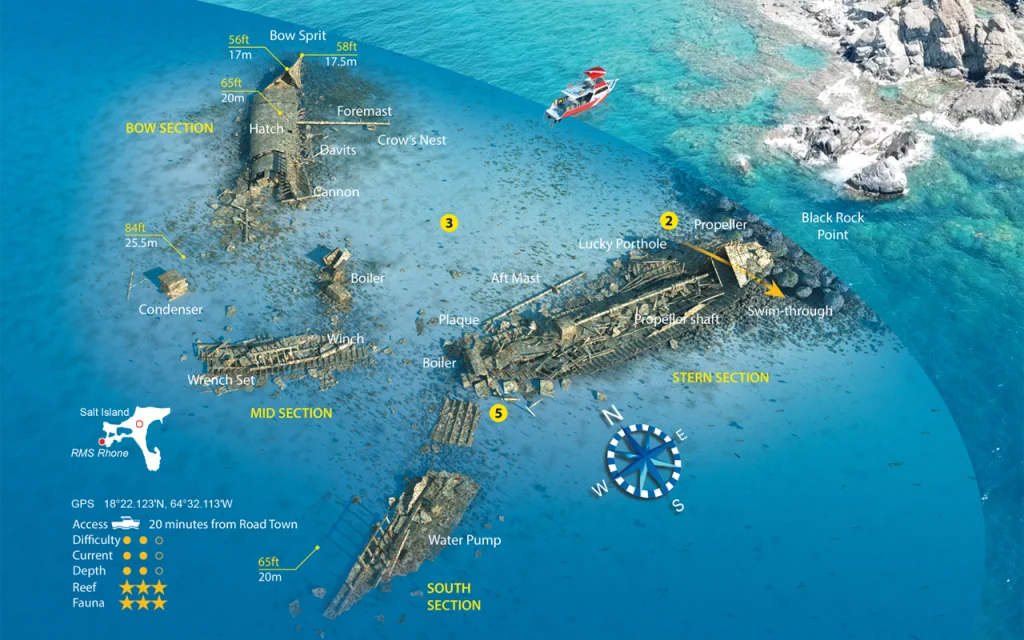
Shipwreck Location Coordinates
Depth
The SS Gulfamerica was torpedoed and sunk by the German U-boat U-123 on April 10, 1942, about 4.5 miles (5 miles) off the coast of Jacksonville Beach, Florida. The wreck now rests on the seafloor at the coordinates provided above at a depth of around 60 feet.
What Do Scuba Divers Say About The SS Gulfamerica Dive
Video Footage and Descriptions
- The tanker’s structure, including the hull, deck equipment, and debris field are clearly visible on the sandy bottom at around 60ft depth.
- Divers describe the Gulfamerica as an excellent shore diving wreck, accessible right off the beach in Jacksonville. Its relatively shallow depth of 60ft makes it appealing for recreational and new wreck divers.
- The wreck lies broken into several large pieces but is mostly intact, allowing divers to penetrate and swim through different sections like the engine room and cargo holds. Marine life has taken over the wreck, attracting fish and growth.
Dive Experience Reviews
- Reviews on dive sites praise the Gulfamerica as an excellent Jacksonville shore dive, rating it highly for visibility, marine life, and historical interest as a WWII shipwreck.
- Some note the wreck as an easy dive suitable for beginners, while others appreciate the opportunity to penetrate different areas of the wreck for a challenge.
What Kind of Marine Life Can Be Found on The Ship
- Giant Moray Eels
- Spotted Eagle Rays
- Nurse Sharks
- Barracudas
- A variety of tropical fish
- Lobsters
- Octopus
- Stingrays
- Numerous schools of fish
- Crabs and octopus nestled in the fallen cannons
- Sea turtles frequently spotted around the wreck
The wreck itself is covered in colorful coral growth, creating a living reef habitat for the abundant marine life. Divers are often greeted by a large local barracuda known as “Fang” who has made the wreck his home.
Key Information
| Key Information | Details |
|---|---|
| Ship Name | SS Gulfamerica |
| Type of Ship | American tanker |
| Sinking | Sunk on maiden voyage in 1942 by German U-boat U-123 off Jacksonville Beach, Florida |
| Casualties | 19 crew deaths |
| Wreck Location | 4.5 miles off the coast of Jacksonville Beach, Florida |
| Coordinates | 30°16.670’N, 81°13.630’W |
| Depth | Around 60 feet |
| Wreck Condition | Mostly intact, allowing penetration into sections like engine room and cargo holds |
| Marine Life | Covered in marine life including fish, lobsters, octopus, stingrays, sea turtles, coral growth |
| Dive Reviews | Praised for historical WWII interest, good visibility, abundant marine life. Suitable for beginner and experienced wreck divers. |
| Accessibility | Shallow depth of 60 feet makes it appealing for recreational and new wreck divers. Excellent shore diving wreck. |
What Makes The RMS Rhone a Unique Diving Experience
- Historical Significance: The wreck of the RMS Rhone has a fascinating history, sinking in 1867 after hitting Black Rock Point off Salt Island during a hurricane. Divers can explore the remains of this 310-foot Royal Mail Ship and learn about its past.
- Excellent Condition: The wreck is in remarkably good condition, with the bow and stern sections largely intact. This allows divers to swim through the wreck and see artifacts like tools, silverware, and even the captain’s silver spoon.
- Diverse Marine Life: The wreck is teeming with marine life, including giant moray eels, spotted eagle rays, nurse sharks, barracudas, and numerous species of tropical fish. Divers often spot lobsters, octopus, stingrays, and sea turtles around the wreck.
- Accessibility: The wreck lies at a maximum depth of 85 feet, making it accessible to both scuba divers and snorkelers. The shallowest parts are around 30 feet deep.
- Popularity: The RMS Rhone is one of the most famous wreck dives in the Caribbean. It has been featured in numerous magazines, TV shows, and films, including the 1977 movie “The Deep”.
- Exclusive Dive Experience: Sail Caribbean Divers offers a PADI certified diving specialty specific to the Wreck of the Rhone, which is exclusive to their program.
How Does The RMS Rhone Compare to Other Shipwrecks in Florida
The RMS Rhone is not located in Florida, but rather off the coast of Salt Island in the British Virgin Islands. It sank in 1867 after hitting Black Rock Point during a hurricane, killing 123 people.Some notable shipwrecks in Florida include:
- USS Spiegel Grove (LSD-32): A landing ship dock that was intentionally sunk in 2002 off the coast of Key Largo to create an artificial reef.
- SS Maheno: A former Australian hospital ship that washed ashore on a beach in the Florida Keys in 1935 during a hurricane.
While these Florida wrecks are interesting dive sites, the RMS Rhone is considered one of the best and most famous wreck dives in the Caribbean due to its historical significance, excellent condition, and abundant marine life. The wreck site and surrounding area were designated a national marine park in 1980.
While Florida has some notable shipwrecks, the RMS Rhone stands out as a premier wreck dive site internationally, not just in Florida. Its location, history, and current state make it a truly unique and popular destination for wreck enthusiasts.
What is The Full History of This Ship
The RMS Rhone was a Royal Mail Ship built in 1865 by Millwall Iron Works for the Royal Mail Steam Packet Company. She was an iron-hulled steamship measuring 310 feet long with a 40 foot beam, capable of carrying 313 passengers in luxurious accommodations including 253 first-class, 30 second-class and 30 third-class cabins.
The Rhone was equipped with double masts and sails, but her primary propulsion was a single compound steam engine driving a massive three-bladed bronze propeller, the second of its kind ever created. This allowed her to reach speeds up to 14 knots on her maiden voyage from Southampton to Rio de Janeiro on October 9, 1865, where the Brazilian Emperor Pedro II toured her cutting-edge engine room.
Over the next two years, the Rhone proved her seaworthiness, weathering several fierce storms that damaged her lifeboats, furniture and cargo, earning a reputation as “unsinkable” under the command of Captain Robert F. Wooley. In January 1867 she was transferred to the more treacherous Caribbean route.
On October 19, 1867, the Rhone was refueling at Peter Island when a hurricane struck unexpectedly late in the season. Wooley decided to sail to open sea, but in the eye of the storm a giant wave knocked him overboard. The Rhone was then driven onto Black Rock Point off Salt Island, her hull breached. The resulting explosion from the super-heated boilers meeting cool seawater tore the ship in half, sinking her immediately with most passengers tied to their bunks. Only 23 of the 146 passengers and crew survived.
The Rhone’s topmast remained a navigational hazard above water until 1950 when the Royal Navy blew up the stern. The wreck site and surrounding 800 acres became the BVI’s first national marine park in 1980. The Rhone is now one of the most famous dive sites in the Caribbean, with her massive bronze propeller and other wreckage providing habitat for abundant marine life.
What Historical Features Can Still Be Identified on The RMS Rhone Wreck
- Bronze Propeller: The massive bronze propeller, which is the second of its kind ever created, remains intact and is a prominent feature of the wreck.
- Checker Tile Floor: The checker tile floor of the galley can be seen in a section broken off mid-ship, providing a glimpse into the ship’s luxurious past.
- Captain’s Teaspoon: Captain Frederick Woolley’s teaspoon is still lodged into the wreck itself, a poignant reminder of the tragic events that unfolded.
- Lucky Porthole: A brass porthole and glass window, known as the “lucky porthole,” survived the storm intact and remains shiny due to divers rubbing it for good luck.
- Masts and Rudder: The masts and rudder of the ship are still recognizable, giving divers a sense of the ship’s original structure.
- Driveshaft and Engine Box: Divers can swim alongside the driveshaft, which leads to what remains of the engine box and gears, showcasing the ship’s advanced engineering for its time.
- Round Frames of Portholes: Many of the round frames of portholes are still intact, adding to the eerie and historical atmosphere of the wreck.
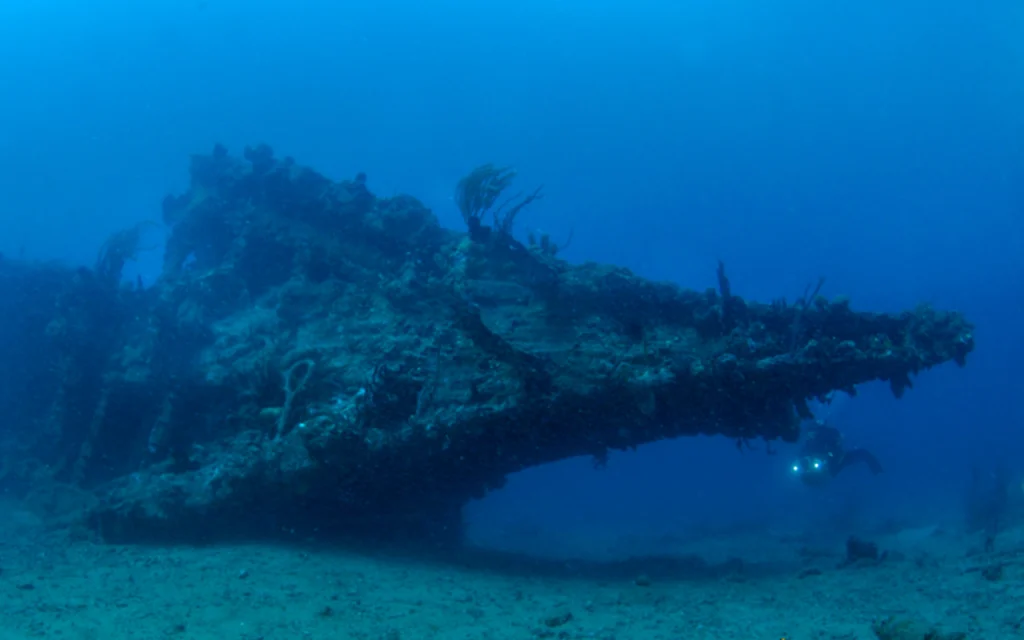
What Safety Measures Are in Place for Divers Visiting the RMS Rhone
- Certification Requirements: Dive operators like Dive BVI require proof of certification prior to diving with them. This ensures that divers have the necessary skills and knowledge to navigate the wreck safely.
- Refresher Courses: Divers with limited logged dives or who haven’t dived in over a year may be required to take a refresher course or hire a private instructor to ensure they are up to date with their skills and safety protocols.
- Guided Dives: Dive operators provide guided dives, which include a detailed briefing on the wreck, its history, and any hazards to be aware of. This helps divers stay informed and avoid potential risks.
- Safety Briefings: Before each dive, safety briefings are conducted to remind divers of important safety procedures such as monitoring depth, air consumption, and no-decompression times.
- Streamlined Gear: Divers are advised to streamline their gear to avoid entanglements or obstructions that could pose a hazard to themselves or other divers.
- Weather Monitoring: Dive operators closely monitor weather conditions to ensure that dives are not conducted during unfavorable weather, which could increase the risk of accidents.
- Safety Stops: Mandatory safety stops are included in the dive plan to allow divers to gradually ascend and avoid decompression sickness.
- Night Dive Precautions: For night dives, additional safety measures are taken, such as providing lights and conducting slow, guided dives to minimize the risk of accidents in low-visibility conditions.
Dive Shops That Provide Diving Trips to This Ship
Here is a list of dive shops that provide diving trips to the RMS Rhone shipwreck:
- We Be Divin’: Located in Road Town, Tortola, with a rating of 5 and 24 reviews.
- Blue Water Divers: Located in Road Town, Tortola, with a rating of 4.9 and 66 reviews.
- Dive BVI – Scrub Island: Located on Scrub Island, with a rating of 4.5 and 13 reviews.
- Sunchaser Scuba: Located in the British Virgin Islands, with a rating of 4.9 and 109 reviews.
These dive shops offer guided dives to the RMS Rhone wreck site, providing a safe and educational experience for divers.
North Florida Wrecks
- USS Oriskany
- USS Massachusetts
- SS Tarpon
- SS Gulf America
- Empire Mica
- USS Chippewa
- Avocet
- Black Bart
- The Vamar
- San Pablo
- USS Narcissus
- The Loftus Wreck
- The Dorothy Louise
- The Mizpah
- MV Janet
- The Eidsvag
- YDT-14 and YDT-15
- USS Strength
- Miss Louise
- The Lulu
- PC-1174
- Three Coal Barges
- USS Accokeek (ATA-181)
- El Dorado
- The Grey Ghost
- The Pete Tide II
- Red Sea Tug

